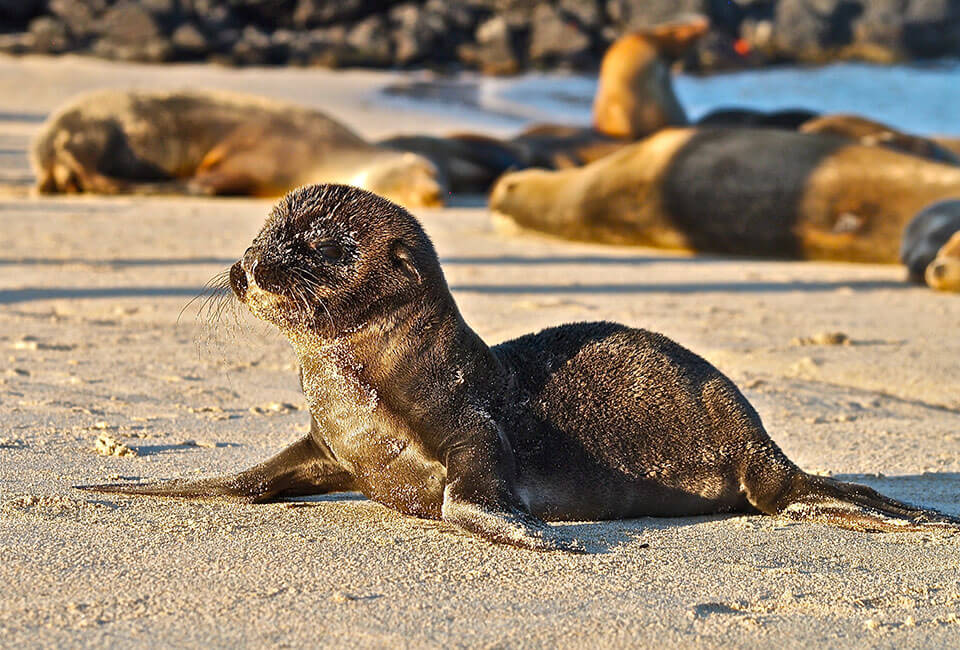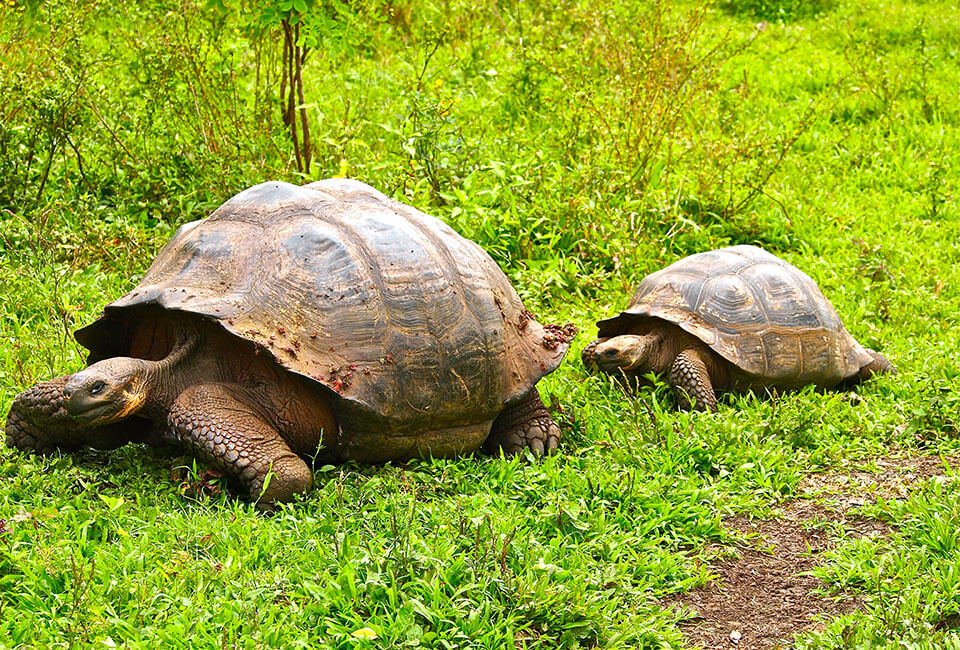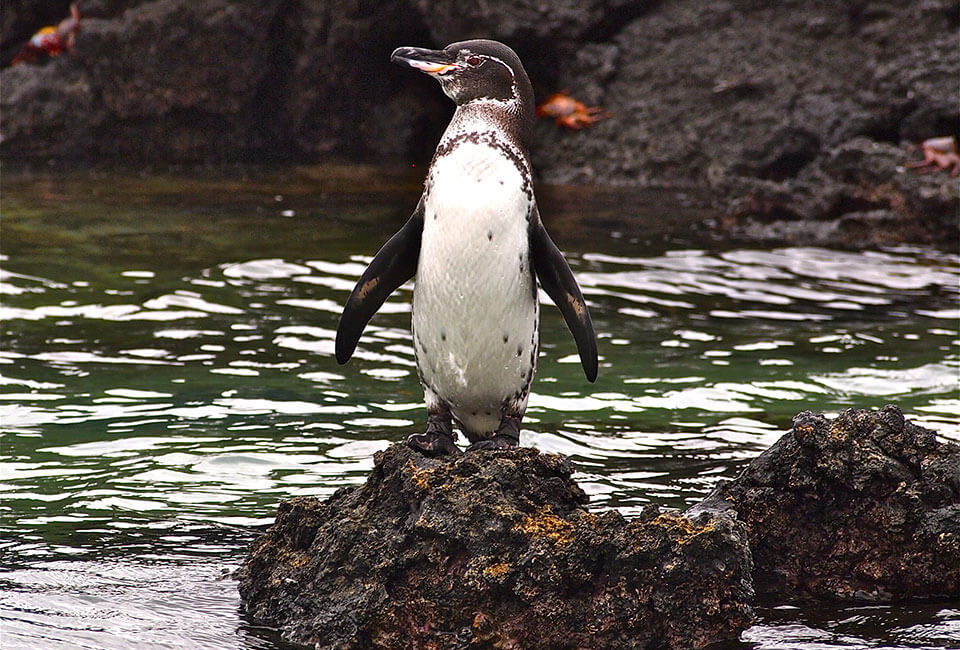With an animal population that attracted no less an authority than Charles Darwin, the Galapagos Islands are among the world’s most exotic wildlife playgrounds. And because the majority of Galapagos animals are not native to the islands (most species originally floated to the island on logs or plant beds), the resulting population is as diverse as it is fascinating.
Blue-Footed Booby
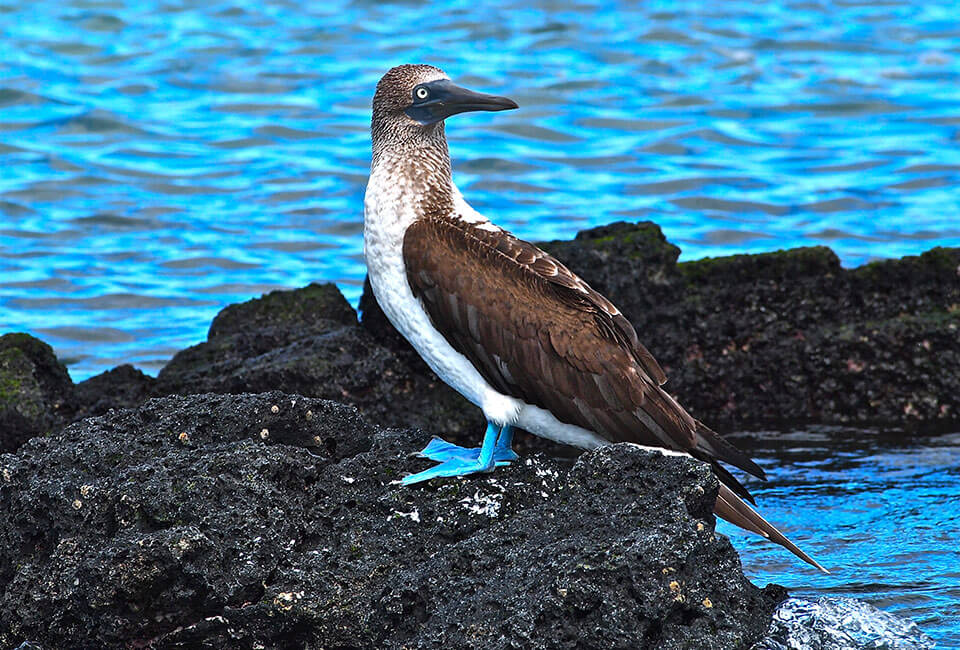
Their distinctly coloured appendages are for more than great photo ops. In an elaborate mating ritual, males display their feet by lifting them up and down while strutting before the female. It’s an impressive ritual, but I can tell you from personal experience (and my wife can corroborate) that it’s less successful for human males.
Iguanas
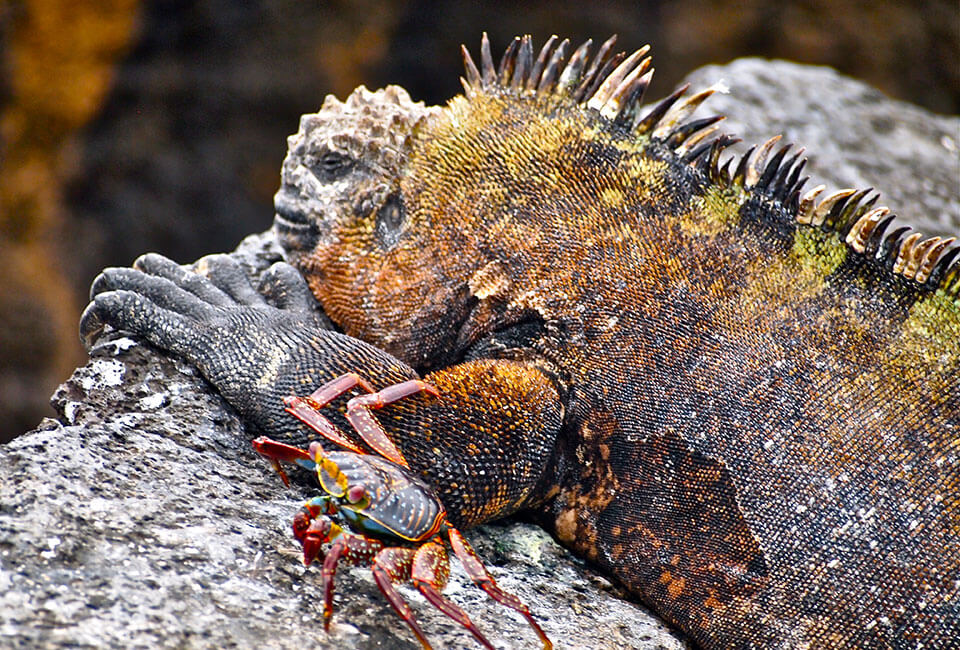
Galapagos land iguanas belong to a genus known as conolophus, which is Greek for “spiny crest.” (One look at the picture at left and you can probably guess why.) Visually the iguanas are something to behold, but don’t tell that to Darwin, who called them “ugly animals,” before elaborating, “from their low facial angle they have a singularly stupid appearance.” Not cool, Darwin. Not cool.


